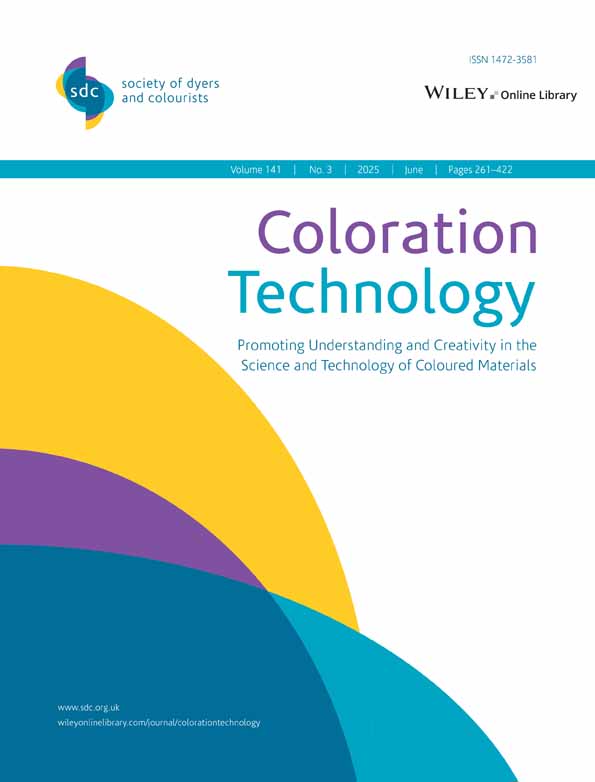Research on full-colour gamut matching of wool blended yarn based on the Kubelka–Munk prediction algorithm
Abstract
This article aims to solve the problems of a high inventory of coloured fibres, low efficiency of manual colour matching and poor repeatability in the woollen textile industry. Seven primary colour fibres were prepared based on seven selected primary colours, namely, red, yellow, green, cyan, blue, magenta and grey, which were then divided into six groups of ternary primary colour fibres. Next, six ternary coupling-combination grid colour-mixing models were constructed and merged into a full-colour gamut grid colour-mixing model. Based on this, 241 types of blended yarns and knitted fabrics were prepared. A colour-matching system for wool colour-spun yarns was constructed based on the Kubelka–Munk colour prediction algorithm and the full-colour gamut grid colour-mixing model. Training samples, test samples and validation samples are planned in each colour-mixing area for constructing the colour-matching system and validating its predictive performance. The results of spinning experiments show that full-colour gamut spinning within the mixing range of seven primary colour fibres is achieved based on the constructed full-colour gamut grid colour-mixing model. The predicted results of test samples and validation samples show that the average colour difference between the predicted colour value and the measured colour value is 0.642, and the average error formed by the predicted blending ratio and the actual blending ratio of primary colour fibres is 0.0223. The results indicate that the constructed colour-matching system achieved an accurate prediction of colour values and the blending ratio of primary colour fibres for blended yarns.
CONFLICT OF INTEREST STATEMENT
The authors declare no potential conflicts of interest with respect to the research, authorship and/or publication of this article.




